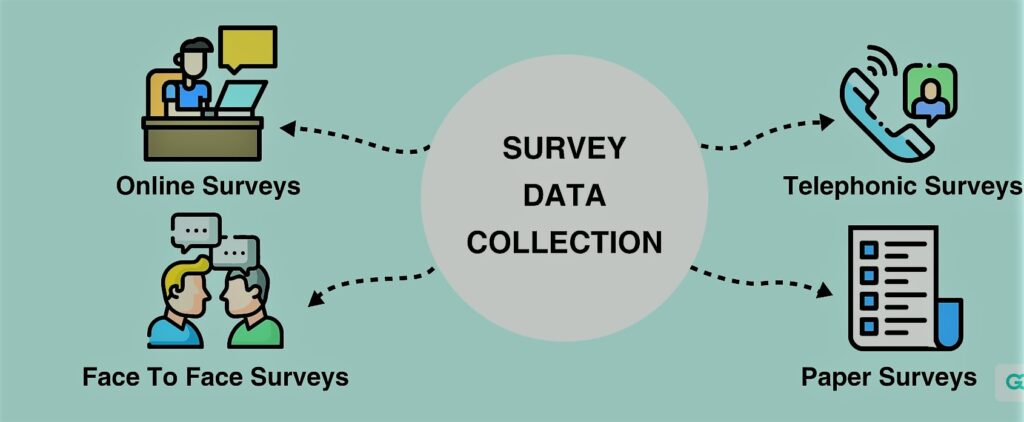Welcome to our thorough overview on the evolution of survey research throughout time! In this post, we’ll walk you through the history of survey research, from its first uses to the ones that are use now.
A Brief History of Survey Research:

Surveys have been use as a means of gathering data since the dawn of time. The Chinese conducted surveys to gather data on their population and determine their needs for irrigation and water management. Surveys were also utilize by the Greeks to gather data on their population, such as statistics on their economic standing, health, and education.
Survey Research’s Evolution into a Scientific Method:
Since its inception, survey research has advanced significantly. The U.S. Census Bureau, however, carried out one of the earliest known surveys in the 1920s, surveying American households to gather information on their living arrangements and work status. Additionally, this was the first time questionnaires were use to collect data.
Survey research didn’t really take off, though, until George Gallup’s book “The Pulse of Democracy” was publish in the 1930s. Gallup’s research was revolutionary since it showed that polls could successfully forecast election results. Additionally, this was a key development that demonstrated how research could be an effective instrument for determining public opinion.
Survey Research’s Contribution to World War II:
In order to learn more about military morale and other war-related difficulties, the US government used surveys during World War II, which accelerated the development of survey research. Additionally, surveys can be use to gauge customer satisfaction and identify potential improvement areas.
Survey Research after World War II:
However, research as a technique for gathering data in numerous disciplines, such as public opinion, marketing, social sciences, and healthcare, continued to flourish in the post-war era. The ease of conducting and analyzing large-scale surveys was facilitate by the accessibility of cutting-edge technology, such as computers.
The Development of Survey Techniques:

Research underwent a dramatic change in the 1960s and 1970s as researchers started to concentrate more on survey methodology and enhancing the quality of survey data. Additionally, the idea of random sampling was establish, which aided in making sure survey findings were representative of the intended population.
Technology improvements in the 1980s and 1990s resulted in the creation of computer-assisted survey methods. On the other hand, methods for conducting surveys like computer-assisted telephone interviewing (CATI) and computer-assisted personal interviewing (CAPI) become more and more popular and widely used.
What Survey Research Does Today:
The collecting and analysis of data across a wide range of sectors and fields still heavily relies on survey research today. It is now simpler than ever to conduct surveys and obtain insightful data thanks to the accessibility of cutting-edge technology and the widespread usage of the internet.
Public opinion polling is a key area where survey research is apply. Surveys are frequently use to determine how the public feels about a range of topics, including politics, social issues, and consumer preferences. Additionally, this data is use by corporations, legislators, and policymakers to make defensible judgements that take into account the wants and demands of the general people.
Surveys are frequently use in the corporate world to carry out market research. Companies can create goods and services that more effectively address the demands of their target market by collecting data about consumer preferences, attitudes, and behaviors. Additionally, surveys can be use to gauge customer satisfaction and identify potential improvement areas.
Surveys are use in academic research to gather information on a range of subjects, including social and economic challenges, health, and wellness.It is possible to use this data to identify trends, look into the relationships between different variables, and conduct hypothesis tests. Surveys are frequently combine with other research techniques, such focus groups and interviews, to fully understand a given subject.
In social science research, survey research plays an important additional function. surveys that are use to gather information on a range of social issues, such as crime, poverty, and even health and education. Additionally, this information can be use to recognise patterns and trends, assess the success of social programmes and policies, and provide guidance for the creation of new policies and programmes.
Final Reflections:
Since its earliest beginnings in antiquity, survey research has advanced significantly. How we obtain information and make judgements has been completely transformed by the introduction of research as a scientific data collection technique. However, research has played a critical part in forming our understanding of the world from its humble beginnings to the present.We may anticipate that survey research will become increasingly important as technology develops, contributing to the collecting and processing of data and offering insightful analyses that can aid in decision-making.
See our other latest posts: digital-technology & online-survey-platforms-history



